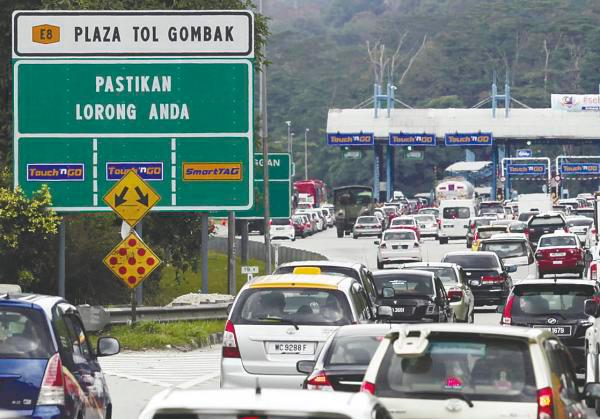MANY of us have faced the frustrating problem of dirty and poorly maintained road signs on our highways and city roads.
These grimy signages present a tableau of neglect at night, their once vibrant colours muted under layers of dirt and grease. Every letter struggles to emerge from the grime, their edges softened and contours blurred by years of exposure to exhaust fumes and weather.
Once shiny and reflective, the metal surfaces now bear a matte, murky finish that mirrors the surrounding urban decay. Even the neon lights, which should be vibrant and inviting, are dimmed by a film of filth, casting a sickly glow onto the road below.
Accountability and responsibility
Who is responsible for maintaining these road signs? The Malaysian Highway Authority (MHA) plays a critical role in approving highway signages while the Public Works Department (PWD) oversees PWD roads, and local authorities manage signage swithin city or district areas.
It is imperative for these authorities to regularly check and ensure that their respective road signages are clean and safe for road users. Despite the assistance of WAZE or Google for navigation, clear and well-maintained road signages remain essential for drivers to make accurate turns at the correct times.
Importance of clean and clear signages
Safety of drivers: Clean and visible signages ensure drivers can easily and quickly read important information such as speed limits, directions, warnings and exits. This reduces the risk of accidents caused by confusion or delayed reactions. Well-maintained signages are crucial during heavy rain, particularly at night.
Navigation: Clear signages can help drivers navigate unfamiliar routes efficiently while dirty or faded signs can lead to missed exits or turns, causing inconvenience and potentially hazardous situations. This issue is often seen at critical junctions where signs are blocked by trees, branches or even illegal banners and buntings.
Visibility at night: The reflective properties of signages are essential for night-time visibility. Dirty or greasy signs lose their reflective ability, making them difficult to see in low-light conditions. This can be dangerous on poorly lit roads. This problem is common on major highways such as the PLUS North-South Highway, Maju Expressway, ELITE, Shahpadu, LITRAK and the Federal Highway. New highways like DASH and DUKE are still in good condition since they are relatively new.
Simple solutions
Regular maintenance and inspections:
Implement a schedule for regular inspections to check for dirt, damage and visibility issues.
Consistently use cleaning schedules to remove grime, bird droppings and obstructions like branches or illegal banners.
Use of durable materials:
Instal signs made from high-quality, weather-resistant materials to withstand harsh weather conditions.
Use anti-graffiti coatings to make cleaning easier.
Proper placement and visibility:
Ensure signs are placed in locations without obstructions like trees or buildings.
Use reflective materials or lighting for better visibility at night and during adverse weather conditions.
Public reporting systems:
Implement systems for the public to report dirty, damaged or obstructed signs, with hotline numbers on major signages for easy reporting.
Provide easy-to-use apps for quick reporting.
Regular updates and replacements:
Replace old or worn-out signs regularly to maintain visibility and legibility.
Update signs to reflect current traffic laws, road changes or developments.
Learning from past incidents
Some notable civil cases serve as reminders for our authorities to pay more attention to signages on our highways and city roads:
Fatal accidents due to poor signage:
In 2018, a fatal accident on the PLUS Highway involved a lorry and a car. The investigation revealed that the absence of proper warning signs about ongoing roadworks contributed to the accident.
In 2016, a motorcyclist died on the Jalan Tun Razak flyover in Kuala Lumpur due to missing road barriers and warning signs during construction work.
Court Cases:
Noorhisham Ismail v Menteri Besar Selangor (2014): The court ruled in favour of the plaintiff, highlighting the government’s responsibility to maintain road safety.
Abdul Latif v Jabatan Kerja Raya (2012): The court found JKR negligent for not placing adequate warning signs, resulting in a significant compensation payout to the victim.
Ensuring clean and safe road signages are a shared responsibility between authorities and the public. Regular maintenance, proper placement, use of durable materials and an effective public reporting system are essential to enhancing road safety.
By learning from past incidents and court cases, authorities can adopt better practices to prevent accidents caused by poor signages.
Clean signages would also add aesthetic value to our beautiful highways and roads. Let us work cohesively and attentively to enhance the safety and beauty of our streets.
Ravindran Raman Kutty
Kuala Lumpur









